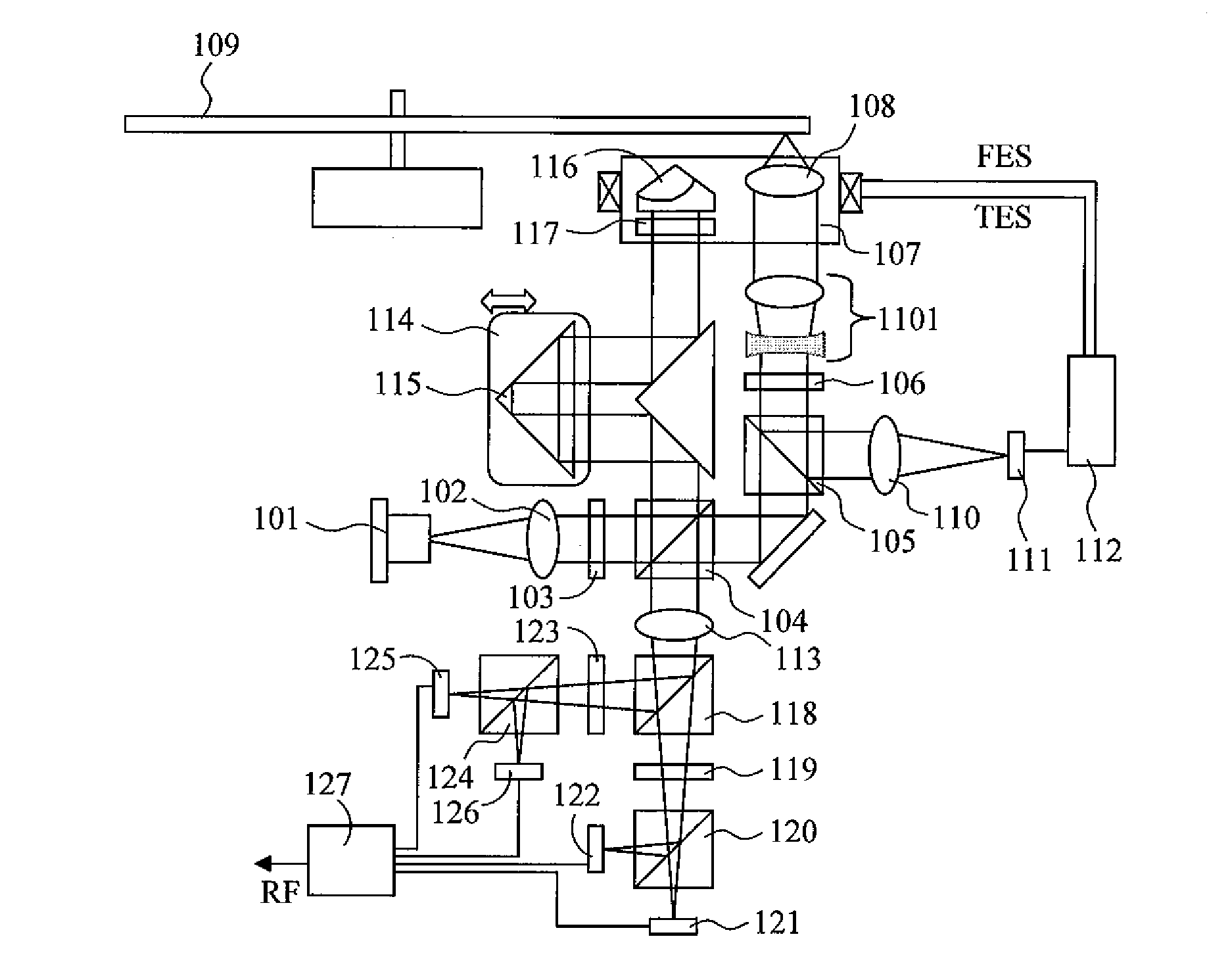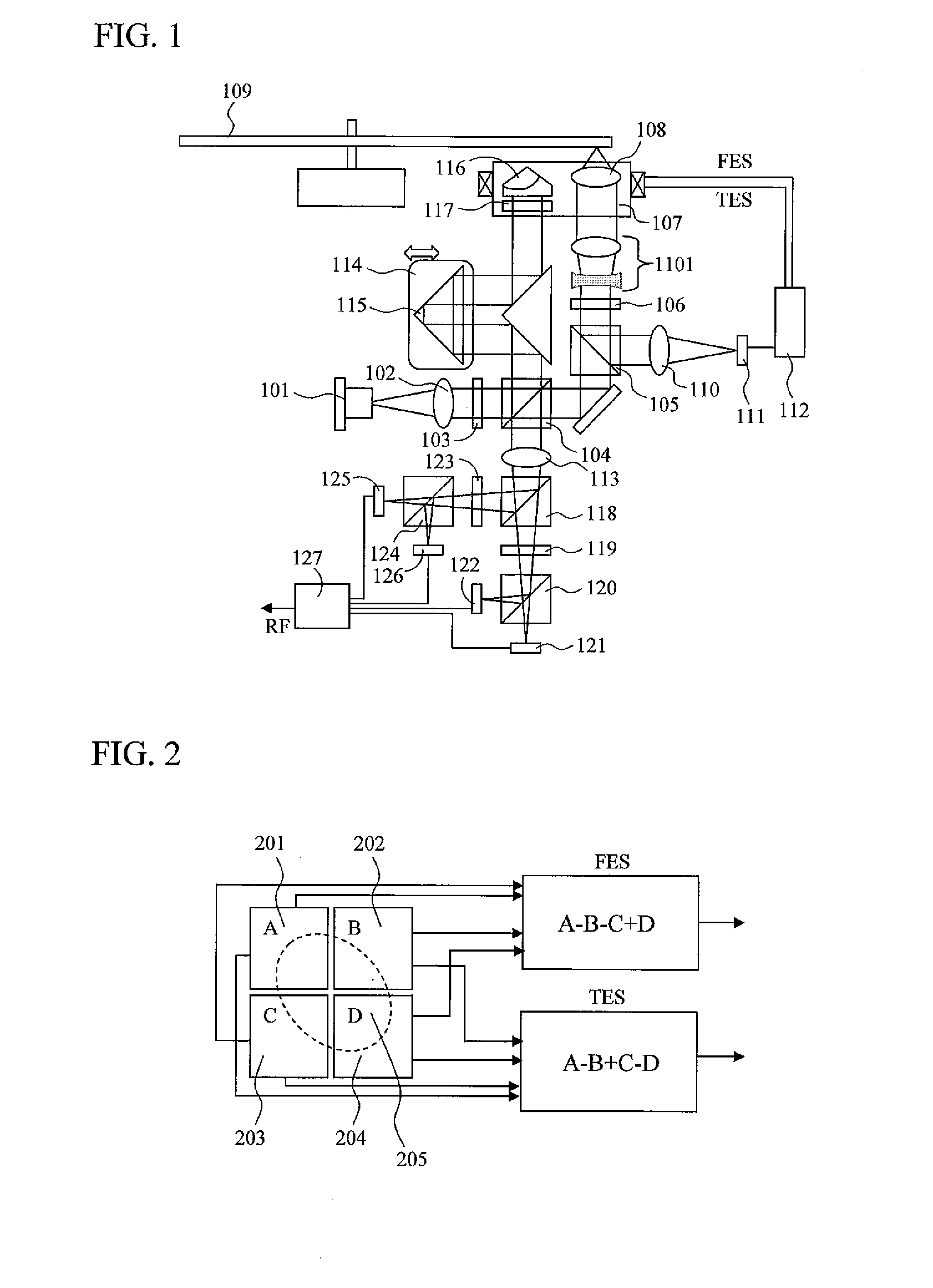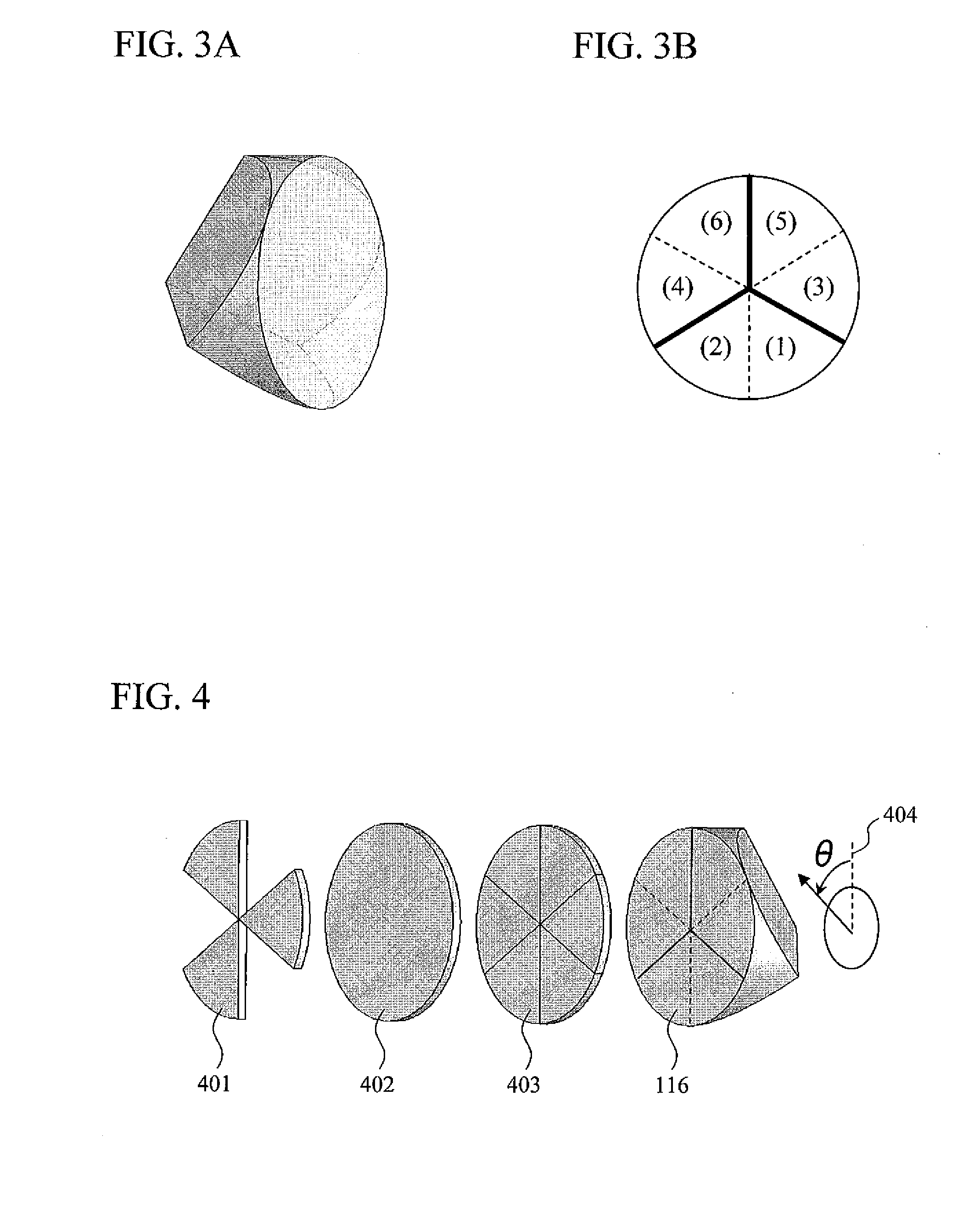Optical head and optical disk apparatus
a technology of optical disk and optical head, which is applied in the direction of data recording, instruments, information storage, etc., can solve the problems of affecting etc., and achieving the effect of ensuring the quality of optical disk
- Summary
- Abstract
- Description
- Claims
- Application Information
AI Technical Summary
Benefits of technology
Problems solved by technology
Method used
Image
Examples
embodiment 1
[0033]FIG. 1 is a schematic view indicating a basic embodiment of an optical head of the present invention. Light from a semiconductor laser 101 is collimated by a collimation lens 102, is transmitted through a half waveplate 103, and enters a polarization beam splitter 104. The polarization beam splitter 104 has functions of transmitting substantially 100% of the p-polarization (hereinafter referred to as horizontal polarization) incident on the splitting surface, and of reflecting substantially 100% of the s-polarization (hereinafter referred to as vertical polarization) incident on the splitting surface. Here, the intensity ratio of transmitted light to reflected light can be adjusted by adjusting the rotation angle of the half waveplate about the optical axis. The transmitted light first enters a special polarization beam splitter 105. The special polarization beam splitter 105 has such a property where 100% of the horizontal polarization is transmitted, and the vertical polariz...
embodiment 2
[0054]As another embodiment, FIG. 7 is a schematic diagram of an optical head that uses a pair of wedge prisms 701 and 702 for optical path length difference adjustment between the signal light and the reference light. In this case, optical path length difference adjustment may be performed by parallel movement of one of the wedge prisms in the optical axis direction or in a direction that is perpendicular to the optical axis (the direction indicated by the arrow in the figure). By using a wedge prism pair, it becomes unnecessary to fold back the optical path as in Embodiment 1. Thus, a reduction in the size of the optical system can be realized.
[0055]In addition, in the present scheme, displacement of the beam occurs, and the degree of displacement varies with the adjustment of the optical path length. However, this can be reduced to a practically negligible degree by appropriately setting the angle, medium, and the like of the wedge prisms. By way of example, a case is considered ...
embodiment 3
[0057]As another embodiment, FIG. 11 is a schematic diagram of an optical head that simultaneously performs spherical aberration correction and optical path length difference adjustment of the signal light. In general, when a multi-layered optical disk is read, the distance traveled through the internal medium of the optical disk by the light varies with each recording layer. As a result, the amount of spherical aberration occurring at the optical disk varies. For this reason, the beam expander 1101 is inserted in the optical path of the signal light, and one of a pair of lenses forming the beam expander 1101 is moved in the optical axis direction. Thus, spherical aberration that cancels out the spherical aberration occurring internally in the optical disk is caused, thereby performing adjustment to make spherical aberration smallest for all recording layers.
[0058]In the present embodiment, the lens mentioned above and a component used for optical path length difference adjustment a...
PUM
| Property | Measurement | Unit |
|---|---|---|
| optical path length | aaaaa | aaaaa |
| wavelength | aaaaa | aaaaa |
| coherence length | aaaaa | aaaaa |
Abstract
Description
Claims
Application Information
 Login to View More
Login to View More - R&D
- Intellectual Property
- Life Sciences
- Materials
- Tech Scout
- Unparalleled Data Quality
- Higher Quality Content
- 60% Fewer Hallucinations
Browse by: Latest US Patents, China's latest patents, Technical Efficacy Thesaurus, Application Domain, Technology Topic, Popular Technical Reports.
© 2025 PatSnap. All rights reserved.Legal|Privacy policy|Modern Slavery Act Transparency Statement|Sitemap|About US| Contact US: help@patsnap.com



